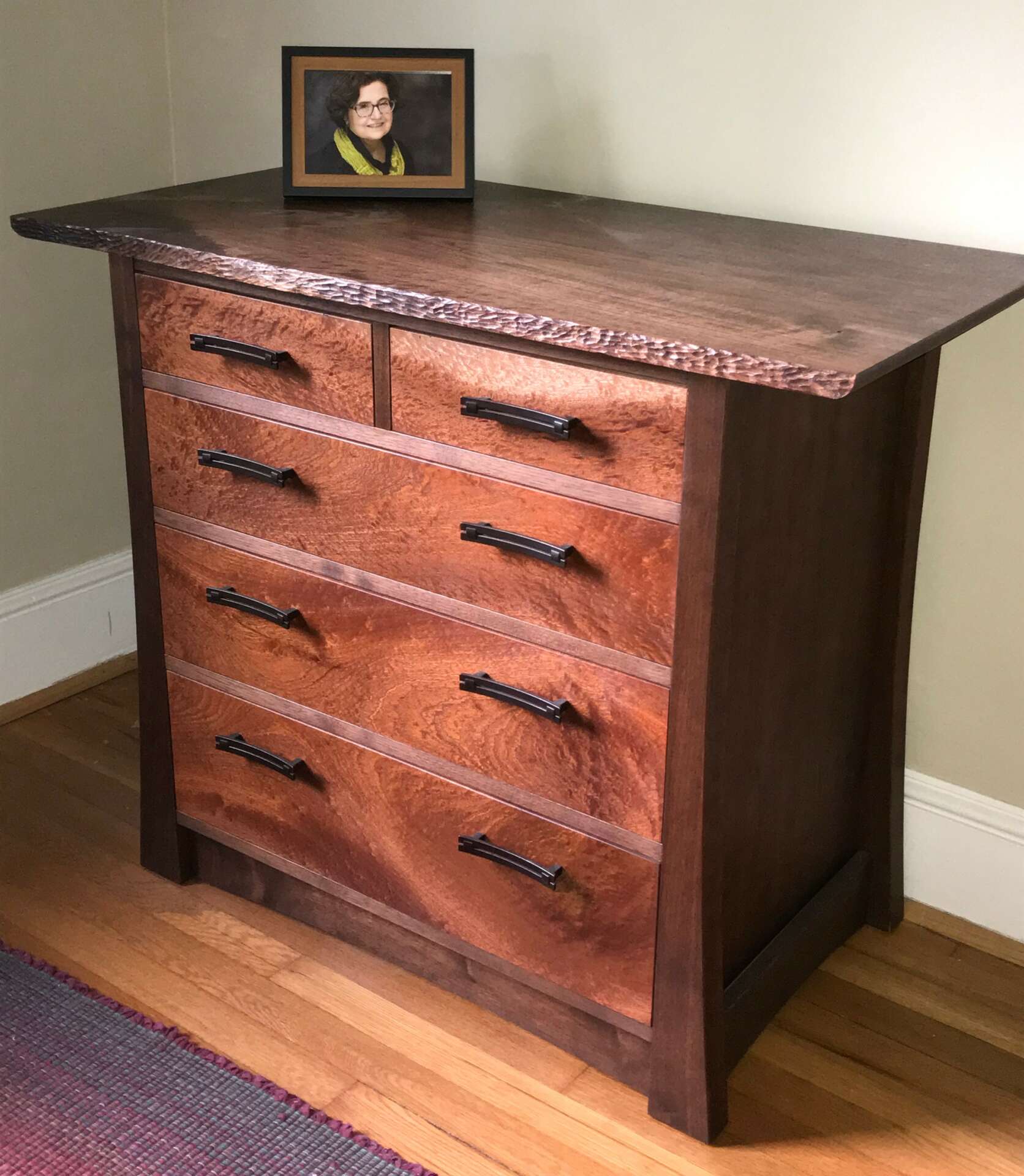We caught up with the brilliant and insightful Robert Ortiz a few weeks ago and have shared our conversation below.
Robert, looking forward to hearing all of your stories today. Are you happy as a creative professional? Do you sometimes wonder what it would be like to work for someone else?
I like wearing the different hats of designer, maker, boss, meeting with clients. 38 years later, it’s still a thrill whenever someone orders a piece that I’ve designed. I’m humbled by their “act of faith” in my work. I’ve had “regular jobs” as a teacher, working construction, working with juvenile offenders etc. Sometimes the pay was better but the rewards, satisfaction, pride of ownership were never as good or meaningful.


Robert, before we move on to more of these sorts of questions, can you take some time to bring our readers up to speed on you and what you do?
I’m a first generation New York born, Puerto Rican, making furniture inspired by the Japanese aesthetic and Shaker furniture making traditions. I have spent a life time exploring and trying to understand the different worlds that I call home and find it curious that for the past 38 years, my furniture making also explores the intersection of two seemingly and yet harmoniously different cultures. Furniture Making was not my first career. I started out as a high school Spanish teacher, worked construction in the summer time, had a brief career as a singer song writer (as a child I studied classical piano) performing on the college coffee house circuit from 1976 to 1980, and after that worked at a residential juvenile facility for a few years. On a trip to Chicago I walked past a book store and saw George Nakashima’s book “The Soul of a Tree”, bought the book, read it several times and decided that that was what I wanted to do for the rest of my life. I read everything I could about wood working, quit my job, went to work for two furniture makers and worked with them for two years. I learned two very important lessons with them: 1. how to get work “out the door” in a timely fashion. 2. how I did NOT want to run my business.
What do you find most rewarding about being a creative?
My studio is in the downtown historic district of a rural town where I have been in my present studio for 26 years. It has, in some ways become a part of the fabric of our downtown. Over the years I’ve hosted fundraisers, concerts, poetry readings and one wedding. In my small show room I have invited other emerging artists to exhibit their work as a way to introduce their work to our local community. I strongly believe that the most important part of being a successful artist is building relationships. Whether it’s my workshops or the furniture I design and make, it is word of mouth and repeat customers that have sustained my work. This was clearly proven to me when the pandemic hit in 2020. All of a sudden I had no work but 2 of my former customers called me out of the blue. Both told me “we don’t need any furniture but you need work. Send us some photos and let us pick out a few things that you can make for us to help get you through this.”


Have you ever had to pivot?
After the financial crash of 2008/9 my business contracted about 30%. It never came back. It also became clear to me that younger people were less interested in acquiring “things” – like furniture, antiques, china, sliver etc. – than their parent’s generation. So, I wondered, where were my future clients going to come from?
In 2014 I finally launched the Chestertown Furniture Making Workshops. These are 3 to 6 day, one-on-one workshops where participants come to town and under my guidance, use my tools, furniture jigs, and equipment to make one of my signature pieces of furniture. It’s a soup to nuts experience. In the 5 and 6 day workshops we actually travel to a logger where I source my wood so that they can pick out the wood for their project. The goal is for the participant to make a piece of furniture that I would not hesitate to have in my show room and for them to get a sense of what it takes to produce a quality piece. I want them to “walk in my shoes” while they are here in my workshop.
I now do two workshops a month. Interestingly, the workshops make up almost 50% of my business now. About ⅓ of the workshop participants have been in their 20’s and 30’s and half of the them have had no wood working experience. The workshops have literally saved my business.
Contact Info:
- Website: [email protected]
- Instagram: https://www.instagram.com/ortiz_studios/
Image Credits
Personal Photo by Walter Lamar


